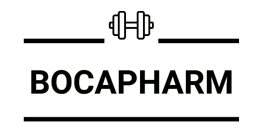If you haven’t touched a Biology textbook in some time, you may have forgotten that metabolism is the sum total of all the chemical reactions or biochemical processes that take place in every cell of a living organism, allowing it to live, grow, reproduce, heal and adapt to its environment. Aided by vitamins, minerals and cofactors, metabolism is how a cell gets energy and removes waste. It’s considered a “vast web of interconnected chemical reactions by which all the cell’s constituents… are created and destroyed”. There are two main classes of biochemical reactions that make up the metabolism and these are anabolism and catabolism. Wondering what they are and what role they play in the human body? Let’s take a closer look.
What is anabolic?
When it comes to anabolic processes, the easiest way to remember their main functions is to remember that they build. It essentially takes smaller units such as nutrients, cells and amino acids, bonding them together in order to create larger, more complex molecules and structures. In the human body, this can refer to building muscle mass, increasing bone density, burning energy to break down fat cells, healing a wound, helping children’s growth in building stronger muscles, making polymers, growing tissue, repairing damage, etc. Some examples of anabolism include when:
- Glycerol reacts with fatty acids to make lipids
- Simple sugars combine to form disaccharides and water
- Amino acids join together to form dipeptides
- Carbon dioxide and water react to form glucose and oxygen in photosynthesis
Therefore, anabolic meaning can be summed up as being androgenic – this means they need an input of energy to progress and they are also not spontaneous. Anabolic processes are typically coupled with catabolic ones, which we’ll talk about below.
What is catabolic?
Catabolic processes, on the other hand, may be considered the opposite of anabolic ones. One easiest way to remember a catabolic reaction is to think of breaking down, or even digestion. In digestion, for example, structures such as proteins, fats or tissues are broken down into smaller units including cells or fatty acids. When your body isn’t getting the necessary food and nutrients to fuel it for daily living, catabolism breaks down muscle fat for energy use. Catabolic biochemical reactions are typically “thermodynamically favourable and spontaneous”. In essence, cells use them to generate energy or to drive anabolism. For instance, catabolism of proteins, lipids, nucleic acids and polysaccharides generate amino acids, fatty acids, nucleotides and monosacharides. In some cases, waste is generated which may include carbon dioxide, urea, ammonia, acetic acid and lactic acid. In a nutshell, this is the catabolic meaning. And here are some examples of cases when it is in place:
During cellular respiration, glucose and oxygen react to yield carbon dioxide and water; and
In cells, hydroxide peroxide decomposes into water and oxygen.
Therefore, when it comes to catabolic vs anabolic biochemical processes, it’s important to remember that one deals with breaking down and the other deals with building up. They can work together and maybe considered different parts of the same coin when it comes to regulating biochemical reactions in the body.
Catabolism vs anabolism: Hormones, body weight and exercises
Hormones
When it comes to the complex world of hormones and their relationship with the metabolism as well as the two biochemical phases or processes of catabolism and anabolism, it’s important to take a look at which ones are involved.
With catabolism, the prominent hormones in the process include adrenaline (epinephrine), cortisol, cytokines and glucagon. Here’s what each one does:
- Adrenaline: it accelerates the heart rate, opens up bronchioles in the lungs for improved absorption of oxygen and it also “floods” the body with glucose for more energy.
- Cortisol: this is produced in the adrenal glands and is called the “stress hormone”. It essentially increases blood pressure and blood sugar levels as well as suppresses the body’s immune processes.
- Cytokines: this is a hormone that is made up of a small protein which facilitates the communication and interaction between cells. In some cases, cytokines are released when the body experiences an “invasion”. This may be a result of bacteria, virus, fungus tumour or an injury.
- Glucagon: produced in the pancreas, it helps to break down glycogen into glucose. Stored in the liver, which is then further stimulated, glucagon helps the liver to catabolize glycogen. This then enters the bloodstream as glucose.
The hormones involved in anabolism processes include estrogen, insulin, growth hormone and testosterone. Here’s how they each function in the body:
- Estrogen: this hormone is present in both men and women and is mainly produced in the ovaries. It regulates some women’s sexual characteristics, regulates the menstrual cycle and can help strengthen bone mass.
- Insulin: this is produced in the pancreas. It helps regulate blood level and use of glucose. It’s important to note that glucose cannot be used without insulin.
- Growth hormone: this is produced in the pituitary gland and it helps to regulate growth during early stages of life. Once a person’s physical shape has matured, this hormone helps to regulate the repair of bones.
- Testosterone: just like estrogen, testosterone is present in both men and women. It is mainly produced in the testes and it helps to regulate some male sexual characteristics, strengthens bones as well as helps to build and maintain muscle mass.
Body weight
Regarding a metabolism and anabolic and catabolic processes, it’s also important that they come into play in terms of regulating body weight. As mentioned earlier, anabolic processes help to build and maintain muscle mass. On the other hand, catabolic processes break down or lose mass including fat and muscle. Both processes can lead to fat loss over time. However, fat loss and muscle gain do not necessarily mean a lower weight number.
For example, those who perform multiple anabolic workouts are more likely to shed fat and even gain muscle. Since muscle has a higher density than fat, the body weight and body mass index could be higher, despite a learner physique.
Meanwhile, those who engage in catabolic workouts could see fat loss and muscle loss. This will mean that although you will ultimately weigh less, you will also have less critical muscle mass.
Exercises
Finally, there are also differences in exercises between anabolic and catabolic processes.
Examples of anabolic exercises include weight-lifting, push-ups and squats. These typically require very little oxygen and energy use. What these exercises do is cause small tears in muscle fibres and the body then spends energy to repair and strengthen the tissue. These exercises are great for building muscle.
Examples of catabolic exercises include “aerobic or cardio” exercises and can range from swimming and biking, dancing to running. They require the body to be in a steady and active state for a longer period of time. Furthermore, they increase the body’s heart rate, blood pressure and respiration. In this state, the body breaks down glycogen to use as fuel. When the carbohydrates “store” has run out, the body’s cortisol uses amino acids to create energy. These types of exercises are good for building a healthy heart and lungs, although they can also help cause the loss of body mass in terms of muscle and fat.
There are also combinations of anabolic and catabolic exercises that may be performed. These may result in the loss of fat as well as building muscle.
Wrapping up
Keeping all this in mind, some people may choose to use anabolic steroids, which are prescription drugs that are either natural or synthetic and mimic the effects of testosterone. Their purpose is to help build more muscle in a shorter period of time, in an “artificial” manner. For best use of anabolic steroids, it’s advisable to consult with a medical specialist beforehand. And to check out what anabolic injectable steroids and oral steroids we have on offer.








